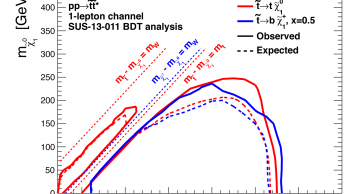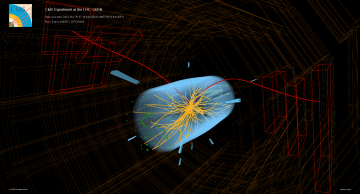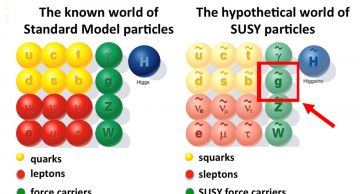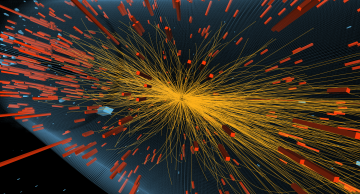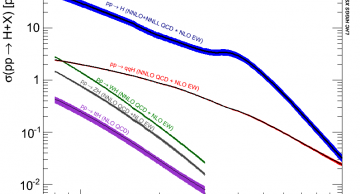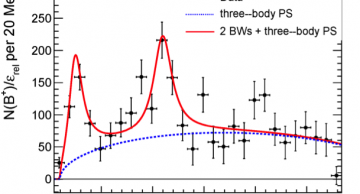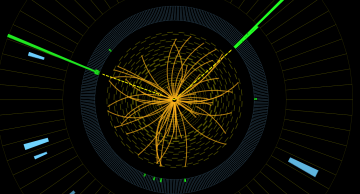CMS presented new results of searches for signatures of supersymmetry (SUSY) at the LHCP conference held in Barcelona, Spain in May and at the EPSHEP conference held in Stockholm, Sweden in July. These results use either the full 20 fb–1 of data…
News
|
achintya |
Physics
CMS Experiment, CERN
25 July 2013
UPDATE: Last Friday, CMS and LHCb reported their individual results for the decay of Bs mesons into pairs of muons (see CMS results below). Yesterday, both collaborations jointly presented a preliminary combination…
|
lincoln |
Physics
One of the biggest unanswered questions of particle physics is why the mass of the Higgs boson is relatively small when the Standard Model suggests a more natural value would be many thousands of trillions of times higher. We don't know the answer…
|
velkovsk |
Physics
Observing a phenomenon for the first time helps us fine-tune our understanding of the Universe. CMS physicists found such a phenomenon in September 2012 in proton-lead collisions, an observation that has since been reinforced by much more data from…
|
fanfani |
Physics
CMS measures production rates up to high transverse momenta
A decade after its unexpected discovery, the properties of the X(3872) exotic resonance are still under intense scrutiny. This state was first seen in 2003 by the Belle experiment and then…
|
pivarski |
Physics
Sometimes, everyday words are co-opted by scientists and used as technical terms. One of these is the word “berry”. Talking to a botanist friend of mine, I learned that tomatoes are berries, but strawberries are not — the scientific meaning of a…
|
achintya |
Physics
Following the results presented at the electroweak session of the annual winter conference, Rencontres de Moriond, CMS has now presented many new results for this week’s quantum chromodynamics (QCD) session. The results include many searches for new…
|
achintya |
Physics
CMS is presenting a wide range of results for the annual winter conference, Rencontres de Moriond. The first week of Moriond — 3–8 March — is devoted primarily to electroweak (EW) studies. Among the CMS results are further studies of the recently…
|
achintya |
Physics
The new year brings a new type of collision at the LHC: the accelerator will smash protons and lead nuclei together, allowing CMS and the other LHC experiments to study the cold nuclear matter we expect these collisions to produce. Although we…
|
achintya |
Physics
In 2011, CMS presented early evidence that Upsilon (Υ) particles produced in lead-lead collisions “melt” as a consequence of interacting with the hot nuclear matter created in these heavy-ion interactions. CMS has since updated and extended this…
|
achintya |
Physics
In the vast particle landscape, there are, to borrow a phrase, known knowns (the Standard Model, for example), unknown unknowns (exotic extensions of the Standard Model and beyond), and those ever-interesting known unknowns. A recent CMS observation…
|
achintya |
Physics
At the Hadron Collider Physics (HCP) Symposium held in Kyoto, Japan on 12–16 November 2012, CMS presented many new results, including updates on the search for the Standard Model (SM) Higgs boson as well as Supersymmetry (SUSY). Several of these…

